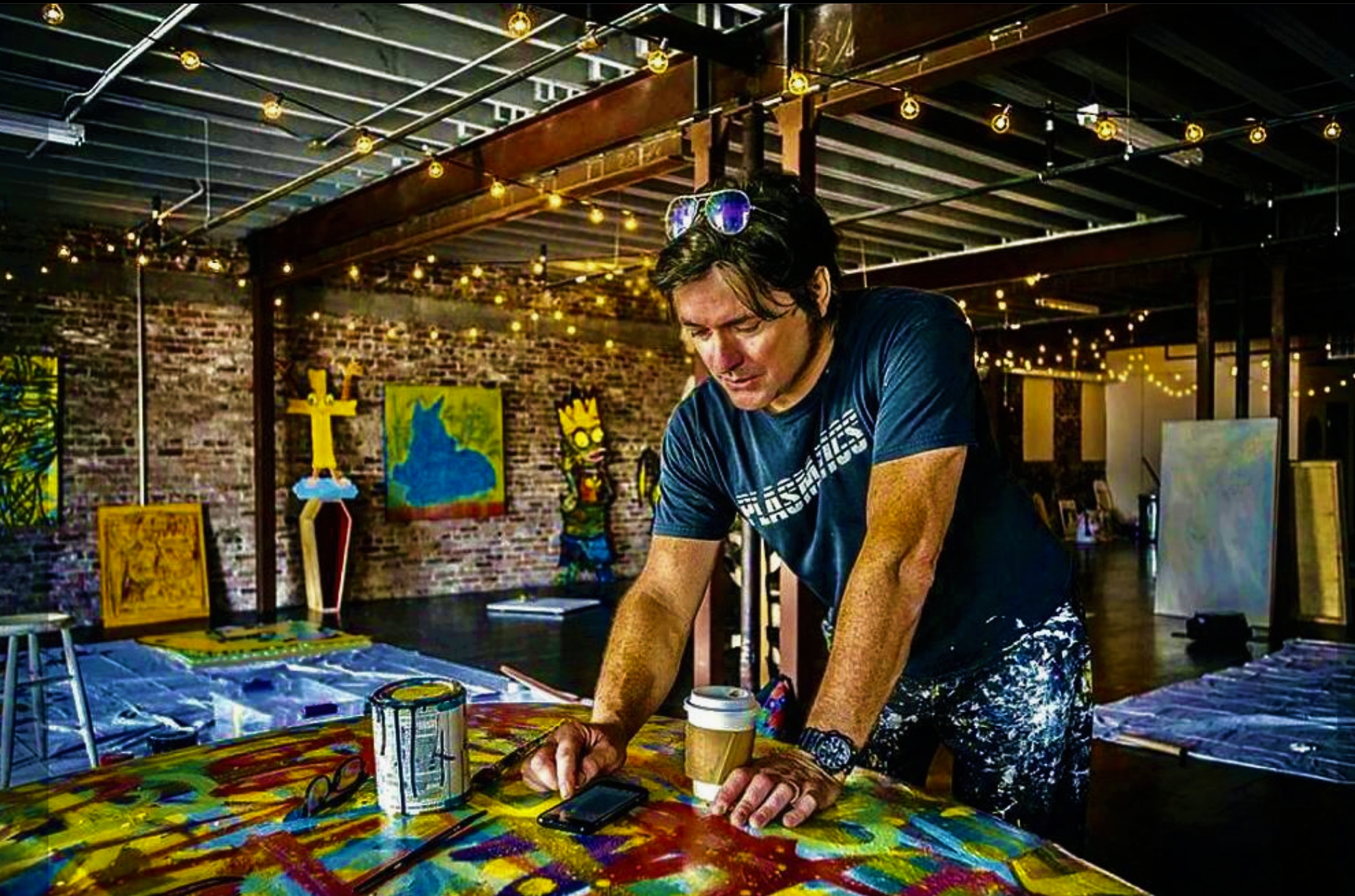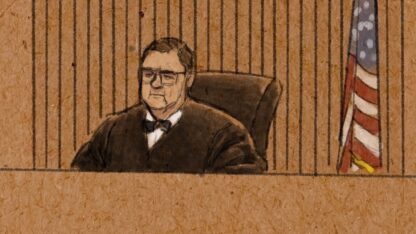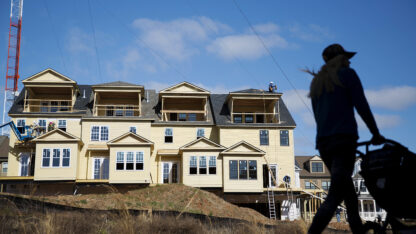Artist R. Land discusses his 30-year love affair with Atlanta

R. Land is the infamous artist behind the “Pray for ATL” hands, which can be seen throughout the city.
JAMES CRICHLOW/JACKSONVILLE BUSINESS JOURNAL
R. Land is one of Atlanta’s most recognizable muralists, whose art pops up all over the city on the walls of coffee shops, bars and restaurants from Decatur to Old Fourth Ward and the Highlands. His signature style, usually recognizable in colorful and curious brushwork tessellations of fantastical creatures, helps keep Atlanta weird. The artist has collaborated with Adult Swim, Atlanta United and even Lexus, whose car he once covered in artwork for a live-painting festival commission. Iconic R. Land images that can still be spotted all over the city include “Pray for ATL” and “Loss Cat.” He joined “City Lights” senior producer Kim Drobes via Zoom to chat about art, imagination, and his adventure decorating Atlanta from bow to stern for the last three decades.
Interview highlights:
The evolution of Land’s completely original yet flexible style:
“The one thing that is consistent throughout the course of time, so far, is a sensibility rather than just the line, or just the style. Because a lot of things that have been a part of what I express out there in the world may not look as much like my drawing, but sometimes the drawing is the thing that achieves whatever it is I need to say. Like the ‘Loss Cat’ thing, for example, that flyer really has little to do with the standard drawing style, but some people can totally see the connection, and some people would never think that it was me.”
“Since I’m not a very good artist, in my own opinion, I think that it’s just the best way that I can make whatever I want to make happen, happen,” said Land.
“I don’t know that there’s any special place where it comes from. I just have hundreds of sketch pads and doodle sheets. Everything starts with just a rough drawing on a little piece of paper, and then all of a sudden you look at it one day, and go, ‘I love the way this thing looks. I want to just try and be as true to this original quick sketch as I can.’ In the case of [‘Kitten of the Sea’], I think there was a little tiny, tiny doodle, and I just blew it up on the copy machine and just tried to make it a more complete drawing. Sometimes just the sketch itself seems to be sufficient, though… If it comes from the right place, sometimes it lasts beyond the moment.”
On “Pray for ATL,” Land’s iconic and ubiquitous wheatpaste of praying hands:
“It was one of those moments where [I was] pretty much in love with Atlanta because of the community that we have, and the types of people that are here, and such a vast array, just a diverse city that seems so ‘with it,’ in so many ways, and I really felt the community so strong,” said Land. “I understood what Atlanta was, I was in love with it, and then I saw outside forces trying to cash in on that and make it some crap that I didn’t like. So I started putting those wheatpaste ‘Pray for ATL’s’ up, with no intention to do anything with it, but just be like this desperate, like, ‘Oh my god, pray for this city,’ kind of thing. It was coming from the heart. It wasn’t like there was anything tongue-in-cheek about it.”
“I put them up around town, and sort of like the ‘Loss Cat’ thing, it instantly resonated in a way that I didn’t expect,” Land said. “People were asking if they could get that in any form. So I started doing these massive silk-screen runs of just the image on wood and paper and just about everything else. And so over the years, it’s become something far more than what I think its original intent was, and has definitely become more of an identifier for the city. And I wouldn’t say that just in my own opinion – I even had a dude tell me one time, who lives in another city, say… ‘Wow, that Pray For ATL thing you do in Atlanta has sort of become like the ‘I Heart New York’ of the South.’”
On finding one’s own way through the art world:
“The path that I had; there was no path. I made it up as I went along…. I had to carve my own thing without any idea that I was doing it right, and for the most part, avoided galleries – just sort of threw my own pop-up shows through the eighties and nineties,” said Land. “Even to this day, when I do a show of new work, I just put it together myself. I never waited for someone to ask me, because not many people were back in the old days. And it got to be such second nature to not expect that, that even when people do ask you, it doesn’t sound good anymore. It’s like, ‘Why? I’ve already done all this stuff without it…’ I think that a lot of young people, younger artists now are on that same tip.”
More on R. Land and his artwork can be found at http://rlandart.com








